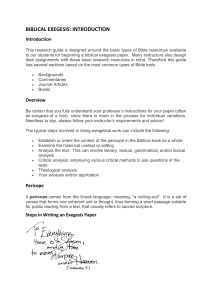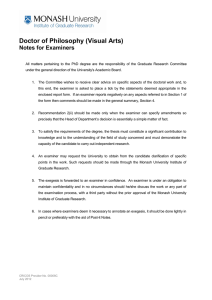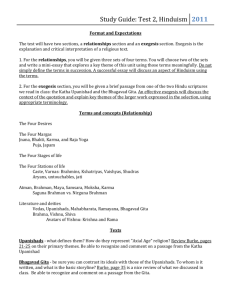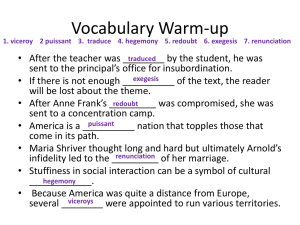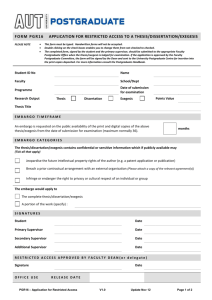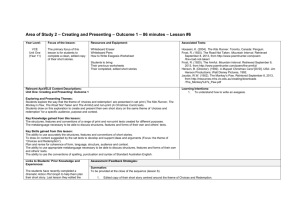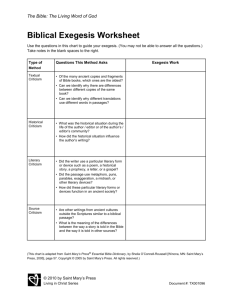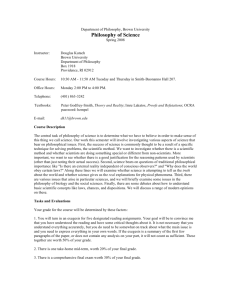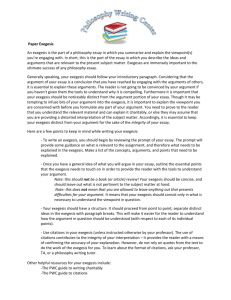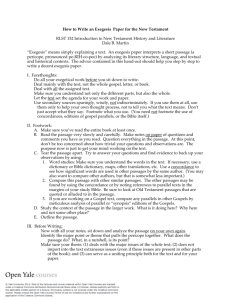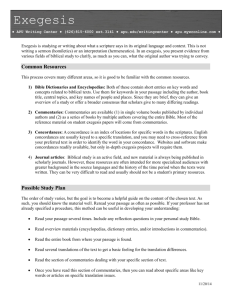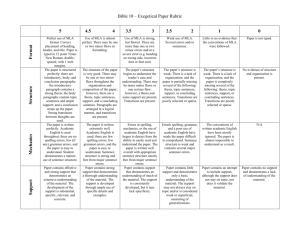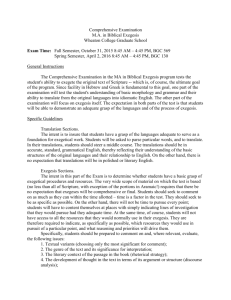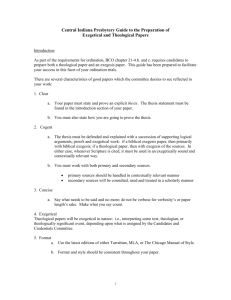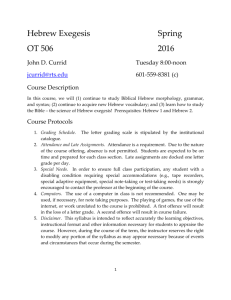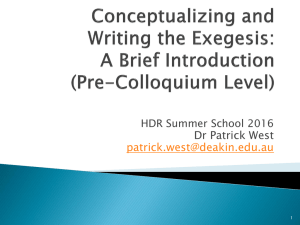General Overview of the Sample Exegesis Papers
advertisement
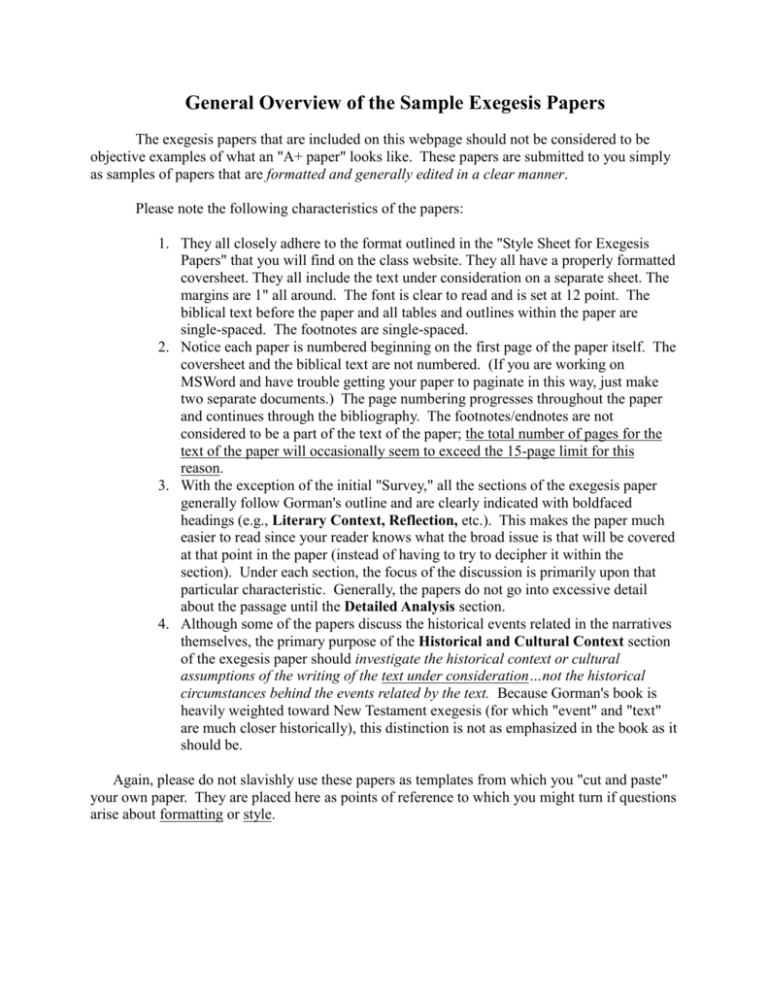
General Overview of the Sample Exegesis Papers The exegesis papers that are included on this webpage should not be considered to be objective examples of what an "A+ paper" looks like. These papers are submitted to you simply as samples of papers that are formatted and generally edited in a clear manner. Please note the following characteristics of the papers: 1. They all closely adhere to the format outlined in the "Style Sheet for Exegesis Papers" that you will find on the class website. They all have a properly formatted coversheet. They all include the text under consideration on a separate sheet. The margins are 1" all around. The font is clear to read and is set at 12 point. The biblical text before the paper and all tables and outlines within the paper are single-spaced. The footnotes are single-spaced. 2. Notice each paper is numbered beginning on the first page of the paper itself. The coversheet and the biblical text are not numbered. (If you are working on MSWord and have trouble getting your paper to paginate in this way, just make two separate documents.) The page numbering progresses throughout the paper and continues through the bibliography. The footnotes/endnotes are not considered to be a part of the text of the paper; the total number of pages for the text of the paper will occasionally seem to exceed the 15-page limit for this reason. 3. With the exception of the initial "Survey," all the sections of the exegesis paper generally follow Gorman's outline and are clearly indicated with boldfaced headings (e.g., Literary Context, Reflection, etc.). This makes the paper much easier to read since your reader knows what the broad issue is that will be covered at that point in the paper (instead of having to try to decipher it within the section). Under each section, the focus of the discussion is primarily upon that particular characteristic. Generally, the papers do not go into excessive detail about the passage until the Detailed Analysis section. 4. Although some of the papers discuss the historical events related in the narratives themselves, the primary purpose of the Historical and Cultural Context section of the exegesis paper should investigate the historical context or cultural assumptions of the writing of the text under consideration…not the historical circumstances behind the events related by the text. Because Gorman's book is heavily weighted toward New Testament exegesis (for which "event" and "text" are much closer historically), this distinction is not as emphasized in the book as it should be. Again, please do not slavishly use these papers as templates from which you "cut and paste" your own paper. They are placed here as points of reference to which you might turn if questions arise about formatting or style.
